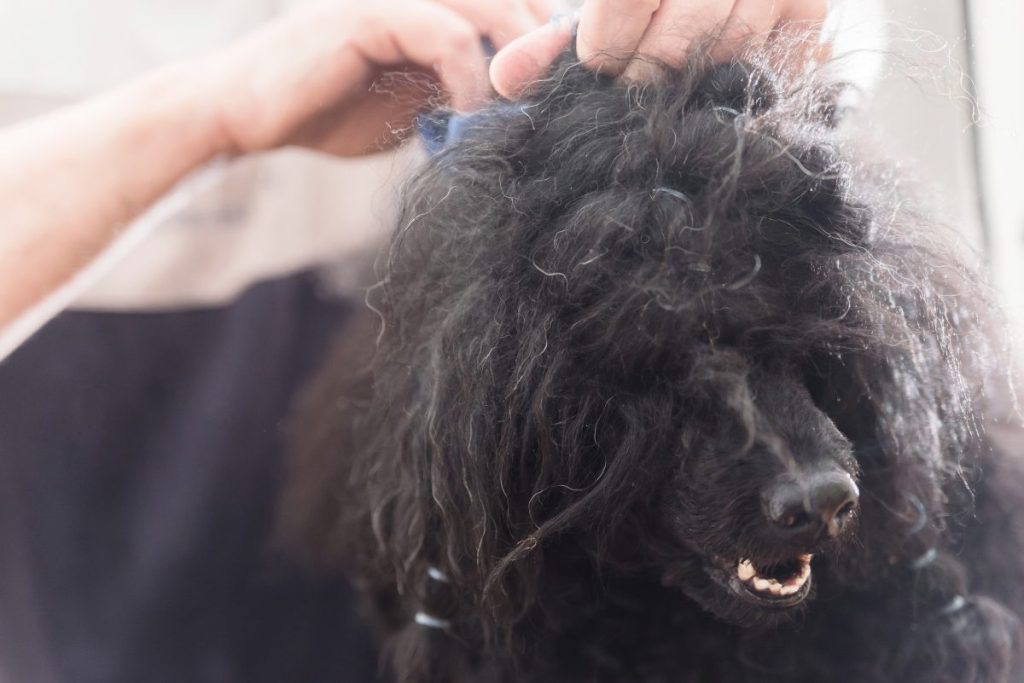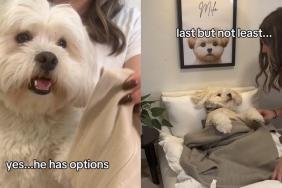Dogs need regular grooming, not just to make them look their best but also to ensure they stay healthy. One of the most common grooming challenges dog parents face is dealing with matted fur. Matting occurs when your dog’s fur becomes tangled and clumped, creating discomfort and potential health issues for your furry friend. We’re going to take a deep dive into matted fur (metaphorically speaking) so you can get your friend back to a tangle-free hairdo.
What causes matted fur
Matted fur can develop due to various reasons, and it’s essential to understand these causes to prevent the problem from occurring in the first place. The primary culprits of matted fur include:
Lack of regular grooming: Dogs with long or curly coats are more susceptible to matting, especially if their fur isn’t groomed frequently. Neglecting grooming sessions allows loose hairs and debris to intertwine, leading to mat formation.
Moisture and dirt: When your dog’s coat gets wet or dirty, the fur becomes more prone to tangling and matting. Mud, sand, or any other debris picked up during outdoor adventures can contribute to mat formation.
Underlying health issues: Certain health conditions, such as skin allergies or excessive shedding, can result in the accumulation of loose fur, making matting more likely.
Dog breeds prone to matted fur
While all dogs can experience matting, some breeds are more predisposed to this issue due to their coat type and texture. Breeds with long, curly, or double coats are particularly susceptible to matting. Some of the dog breeds prone to matted fur include:
How to prevent matted fur
Preventing matting is much easier than dealing with it once it has occurred. Here are some tips to keep your dog’s coat in tip-top condition and minimize the chances of mat formation:
Regular brushing: Brush your dog’s coat regularly, especially if they have long or curly fur. Daily brushing is ideal for preventing mats.
Use the right tools: Invest in grooming tools suitable for your dog’s coat type. Brushes, combs, and de-matting tools designed for specific coat textures will be more effective in keeping their fur tangle-free.
Bathing and drying: After baths or swimming, ensure your dog’s coat is thoroughly dried. Moisture can lead to mats, so it’s essential to dry the fur completely.
Trimming and professional grooming: Regular trimming, especially in areas prone to matting (i.e. behind the ears and under the legs), helps prevent mats from forming.
Strategies to demat your dog’s fur
Despite your best efforts, your dog’s fur may still develop mats occasionally. When this happens, address the issue promptly and with care. Here’s how you can safely demat your dog’s fur:
Be gentle: Avoid tugging or pulling on the mats, as this can cause discomfort and even pain to your dog. Instead, use a gentle touch.
Use a detangler spray: Apply a dog-friendly detangling spray to the matted area, which can help loosen the fur and make it easier to comb through.
Start from the edges: Work on the edges of the mat first, gently untangling the hair with a comb or de-matting tool. Slowly work your way toward the center of the mat.
Use your fingers: For smaller mats or sensitive areas, using your fingers to carefully tease apart the tangles can be less intrusive and more comfortable for your dog.
Reward and praise: Throughout the process, offer treats and positive reinforcement to make the experience more pleasant for your furry friend.
When to go to the groomer
Sometimes, matting can be too severe or extensive for you to handle at home. In such cases, it’s best to seek professional help from a skilled groomer. Here are some situations when a trip to the groomer is warranted:
Severe matting: If the mats are too large or tightly bound, a professional groomer will have the expertise and tools to handle the situation safely.
Matted fur near sensitive areas: Mats close to your dog’s eyes, ears, or genitals require extra care, and a groomer will know how to handle these delicate areas.
Anxious dogs: If your dog becomes stressed or anxious during home grooming sessions, a groomer can handle the situation more effectively.
Preventative grooming: Regular visits to the groomer can help maintain your dog’s coat health and prevent excessive matting.
Matted fur can be a grooming challenge for dog parents, but with the right preventive measures and regular grooming routine, it’s a problem that can be easily managed. By understanding the causes of matting, knowing which dog breeds are more prone to it, and following the strategies above, you can keep your canine companion’s coat healthy, beautiful, and mat-free. Remember, if you encounter severe matting or face difficulties in de-matting at home, don’t hesitate to seek professional help from a skilled groomer to ensure your dog’s comfort and well-being.









